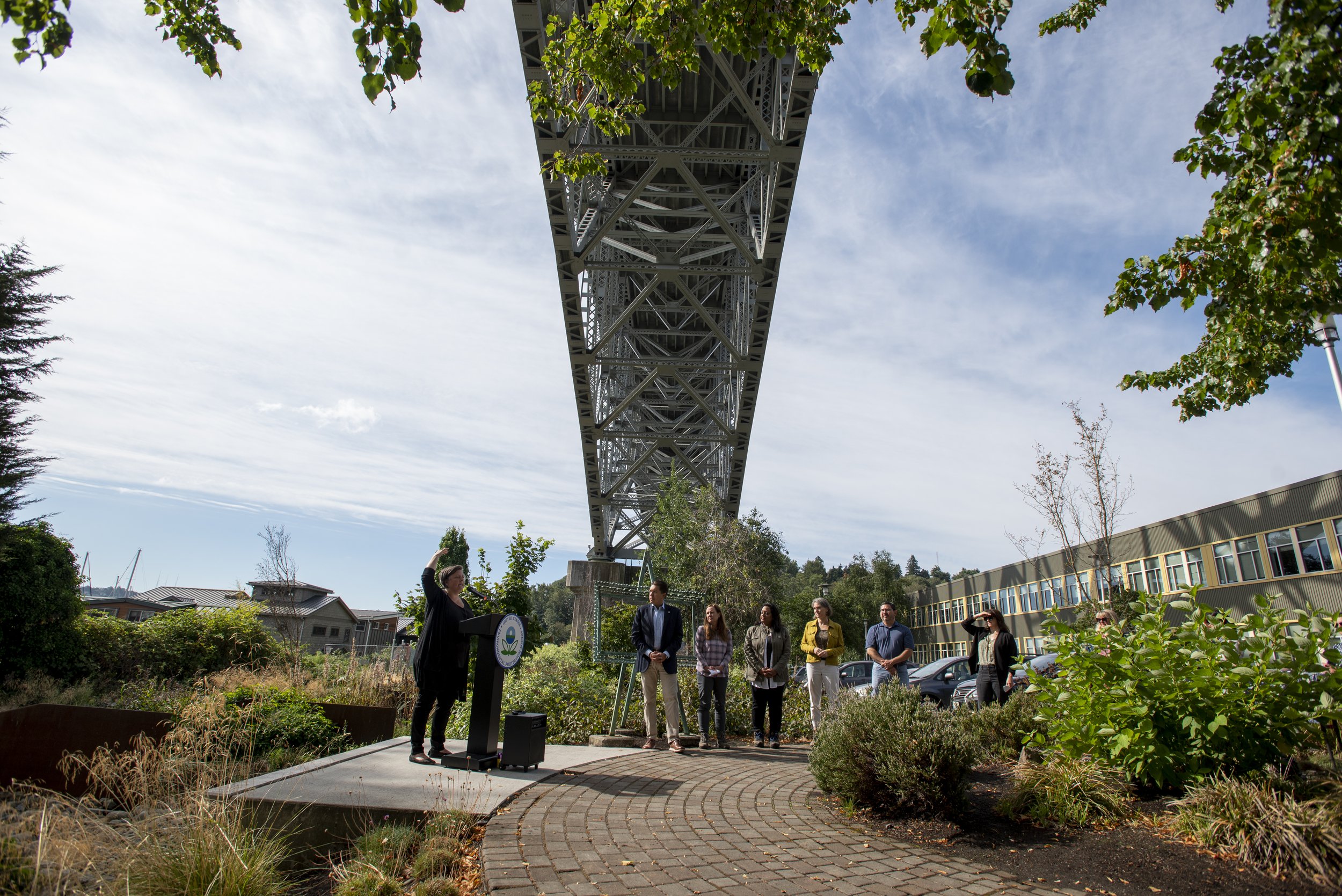In August, the U.S. Environmental Protection Agency Assistant Administrator for Water, Radhika Fox, kicked off a tour celebrating the 50th anniversary of the Clean Water Act at the Aurora Bridge Bioswale in Seattle, WA. The Nature Conservancy was honored to join the event with the EPA Regional Administrator for the Pacific Northwest Casey Sixkiller, Salmon-Safe, and many local partners.
The events featured several local speakers and leaders, including [left to right] Lisa Rozmyn, Washington Stormwater Center Assistant Director; Laura Blackmore, Puget Sound Partnership Director; Casey Sixkiller, EPA Region 10 Regional Administrator; Justin Parker, Northwest Indian Fish Commission; Laura Watson, Ecology Director; Radhika Fox, EPA Headquarters Office of Water Associate Administrator; Ellen Southard, Salmon Safe/Site Story; Jessie Israel, The Nature Conservancy. Credit: Hannah Letinich/TNC
In the past 50 years, The Clean Water Act has enabled the U.S. to make tremendous progress towards securing clean water resources. But while we may no longer see rivers set ablaze, toxic stormwater runoff from our roads and bridges remains a significant concern and must be eliminated from our waterways. New science has shown that toxic chemicals used in car tires are entering the waterways in Puget Sound, and directly threatening native salmon populations.
The good news is: Nature can help.
“When you stand in a well-designed stormwater park and look around, you don’t feel like you’re in an engineered water quality project. You feel like you’re in a park.”
The Aurora Bridge Bioswale which now treats two million gallons of polluted stormwater runoff, is a prime example of this endeavor. For The Nature Conservancy, this is what success looks like when we imagine urban solutions at the nexus of water quality and transportation. Similar opportunities abound for community-designed treatment parks that deploy nature-based solutions since more than half of the new federal infrastructure funding is for transportation and water infrastructure.
Vegetation planted underneath the Aurora Bridge collects and filters pollutants from stormwater runoff before it can enter local waterways. Credit: Hannah Letinich/TNC
TNC is focused on accelerating the pace and scale of methods to clean our water while generating benefits for both people and nature. Public and private partners are coming together to fund and implement green infrastructure installations at pollution hotspots.
In collaboration with WSDOT, Ecology, TNC, and others, a new project that builds on the success of the Aurora Bridge Bioswale is coming together under the I-5 Ship Canal Bridge. It will treat 40 million gallons at a parcel-sized park beneath the bridge to start, and even up to 800 million gallons of dirty road water at that same site a year.
The combination of federal and state funding and the commitment of local partners in Puget Sound means that together we can get the infrastructure right for the next 50 years of the Clean Water Act. Because when we invest in nature-based solutions, we secure cleaner water, cleaner air -- and a promise that people and nature can thrive together.
Feature image: Jessie Israel, Director of Conservation for Puget Sound at TNC, stands at a podium beneath the Aurora Bridge to talk about the stormwater and bringing green infrastructure up to scale. Credit: Hannah Letinich/TNC






















